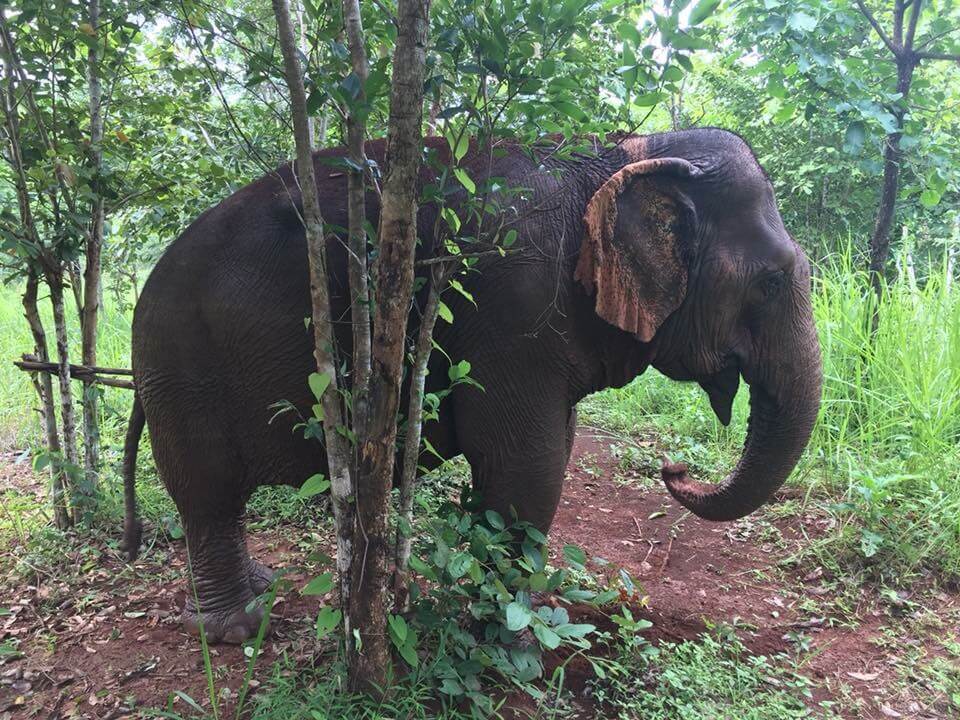
December 22, 2018 | Posted by misfitwanders | Cambodia, corruption, Lifestyles, Memories, Story, Traveling, Trekking
It was fully booked, but we managed to squeeze in. My anticipation for this new adventure began boiling within me. We were in Cambodia during the wet season. So the clay roads were slick and became an unexpected obstacle.
The excitement happened quickly. We were in the car for only 10 minutes and we took the turn onto the treacherous mud road that lies on a hill. Our driver was a native to the land. He seemed use to the slip sliding of the road. He grabbed the wheel and cranked it all the way left, then all the way right. It was becoming a carnival ride, swaying left to right. There were six of us crammed into the suv. But suddenly, we crept into a ditch.
Locals kept passing us on their mopeds staring at us. The driver pushed hard down on the pedal, making us rock back and forth. Finally we were out and back on our way to the Elephant Valley Project area. 45 minutes to a hour, all of us swayed to and fro. But the driver made it a smooth ride.
A feeling of anxiety was washed away once we made it. I steadily walked with the others to a roofed area. Our tour guide, which came with us, explained the land and more about the project.
“What our money goes to is renting the land for the elephants, their medical needs, and food. It also goes to the employees.” He stated.
We learned that it was a little bit of a hardship for them to get the elephants away from the abuse. They had to either buy or rent the elephants from the owners.
“It feels immoral. But here, that is how families make money. They cannot just give away something that helps them with surviving.” Explained the tour guide


My heart ached as he told us a little bit of the back stories of the elephants that now reside with them.
One had been used as a farming tool. Her back spine poked above the rest of her back, which looked considerably painful. This happened from carrying heavy loads on her back repeatedly. Another elephant named Sambo, was used for tourism.
An elephant has more strength in their neck than in the back. Their back is actually weak compared to the rest of their body. This elephant hauled people around for rides on his back. Over time that can cause issues for elephants. When working for the tourism, they fed him junk food. That entailed, Coca Cola, ice cream, and fatty foods.
But once he had come to this peaceful land, he began to lose the weight and act happier. He had no idea how to be an elephant. 30 years of his life was served for a tourism company. But shortly after being brought to Elephant Valley Project, he made a friend. He was shown the ways of being an elephant from her.
Now he could make noises with his long trunk, munch on tall grass, and do elephant things. Time had passed, and all the unneeded weight had disappeared. He was as he was suppose to be now!
As our tour guide gave us summaries of each animal, I began thinking of how much pain they all endured. If I were them, I would have trouble trusting a human again too.
The talk came to an end and our group began walking towards the entrance to Elephant Valley Project.
The road turned into a slippery mess as we went down at a slant through the forest. A dampness hung in the air and in the trees surrounding us. We could hear monkeys howling in the distance. 30 minutes pass and we stop at a wide opening near a clear stream. Patiently, we waited, and soon came two elephants at a steady pace.
They weren’t as big as I was expecting. I had an image of an African elephant in my head. These were almost half the size. But they still held an ancient beauty to them. It was spectacular watching them in their natural habitat. Our guide told us their stories in depth and it felt as though my heart had dropped. All the elephants at this place had such a rough past.




I wanted to console them, tell them everything is better now. But we weren’t allowed to touch them. They are wild animals and need that freedom to be as they were meant to be.
Later that day, we saw them bathing in a river. Each elephant had its own mahout. A mahout is a man that stays with an elephant almost all day, everyday. In Cambodia, the natives saw elephants as sacred. For hundreds of years, they delveloped a language with the elephants. In their own way, they understood them. It was really unique the bond between an elephant and it’s mahout.
Nowadays, Cambodians are realizing a better way to take care of elephants and not use them as they have in the past. Their eyes are beginning to open. It gives me hope! Even when it becomes tough, you can still make a difference to some living thing.